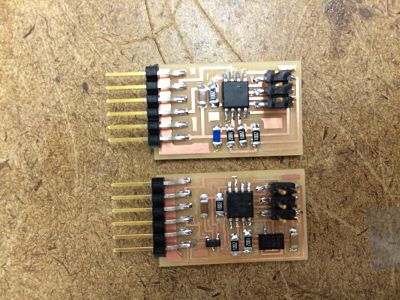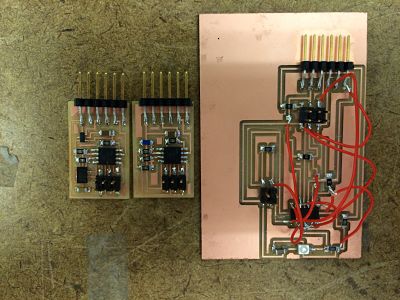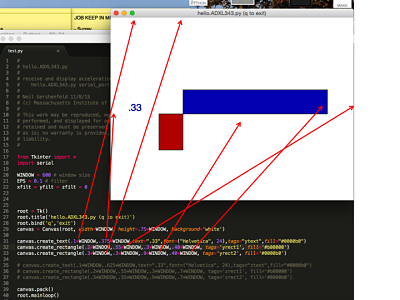3D Accelerometer animated globe
11. Interface and Application Programming
For this week, I wanted to be able to animate and rotate in 3D a globe representing the Earth with a 3D accelerometer. I wanted to use a nice d3 code that can be seen at the top of this page. It is a code that uses the mouse input to rotate the globe:
<script align-center> var width = 960, height = 500; var projection = d3.geo.orthographic() .scale(250) .translate([width / 2, height / 2]) .clipAngle(90); var path = d3.geo.path() .projection(projection); var λ = d3.scale.linear() .domain([0, width]) .range([-180, 180]); var φ = d3.scale.linear() .domain([0, height]) .range([90, -90]); var svg = d3.select("body").append("svg") .attr("width", width) .attr("height", height); svg.on("mousemove", function() { var p = d3.mouse(this); projection.rotate([λ(p[0]), φ(p[1])]); svg.selectAll("path").attr("d", path); }); d3.json("world-110m.json", function(error, world) { if (error) throw error; svg.append("path") .datum(topojson.feature(world, world.objects.land)) .attr("class", "land") .attr("d", path); }); </script>
I thus wanted to replace the mouse input by a 3D accelerometer. The first step was to actually mill and stuff a 3D accelerometer board to be able to control de globe. With that, I also wanted to familiarize with the temperature sensor that I would probably use for the final project, so I also printed it. In case the accelerometer board would not work I could have a back-up. I could also use my light sensor board I designed (and hacked a lot) last week.


The next step was to get familiarize with the interface language. The workflow for using the accelerometer board to pilot the d3 animation was:
JavaScript on web page → WebSocket → node.js server → npm serial module → FTDI Driver → AVR chip
But first, I wanted to gain some insight into different graphic and interface program. I first looked at the python code written during the input device week and played with it: played with the Canvas function of rectangle, location, etc... The following figure shows some characteristics of those functions

Then, I wanted to get familiar with Processing to actually code an interface for my bike seat project. Basically, I wanted to use the different sensors that would be on the board (light, temperature and pressure) to pilot the seat heater and LED of the bike. I thus designed a very quick (and not nice) application that I started to pilot with the mouse (instead of with a board): when I clicked on the different button materializing the sensors, it would turn the seat "on" (marking it red) if I cliked on the seat, representing pressure. The following video shows a demonstration of it. It did not worked very well and the application was not very clean.
Then, I really wanted to get familiar with the d3 interface. Here are the different steps:
- Install node (tutorial)
- Install npm, node's package manager
- Install node serialport
- Install node ws (websocket)
- Navigate to the folder where you have both your project_name.js and your project_name.html and type "node project_name.js"
Unfortunately, I had to leave and the accelerometer board I had broke in the plane so I could not use it anymore as an input. I also focused a lot on the final project and thus did not have a lot of time to dedicate on finalizing the interface project